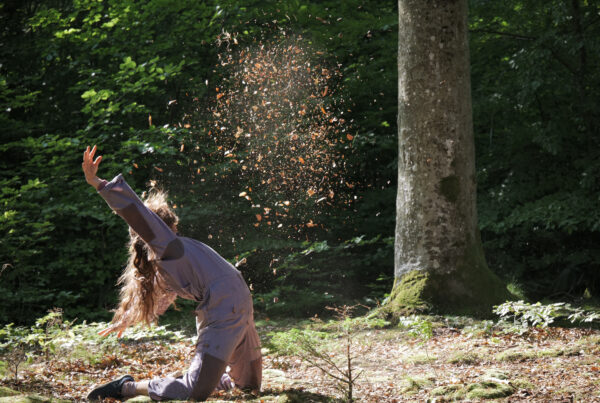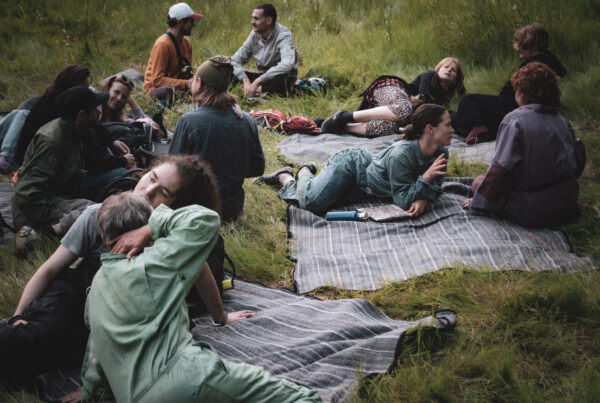author: Jenny Stevenson
date: March 5, 2001
source: Dominion Newspaper
Olive Bieringa and her BodyCartography Project have returned for two performances only in Wellington, with their unique performance idiom – the charting of public spaces through dance.
This involves site-specific work that is built up, layer upon layer, through inhabiting the space and producing largely improvisatory work that is unique to that particular domain.
The setting of chaffers Marina was a spectacular choice. Dancing at the very edge of Wellington′s inner harbour, the five dancers were framed against the city backdrop as the sun slowly set till they became silhouettes in the twilight.
The convergence of sea and cityscape invoked all that is most beautiful about Wellington, enhanced by the perfect, still evening.
The dance unfolded in a series of loosely structured episodes that were linked and accompanied by Shona Holborow on violin and Michelle Scullion on flute. It began with all the performers, equally spaced along the marina, standing with their backs to the audience staring out to the sea – a powerful image that also concluded the work.
A series of playful episodes followed, while involving the performers in wetsuits leaping in and out of the water, dancing at the water’s edge, either solely or in pairs and enacting a hilarious vignette of two ladies rowing and capsizing a leaky boat.
The next stage of the dance involved many of the dancers naked, wrapped only in white gauze strikingly outlined in the dimming light.
Finally, a boat like an ancient barque, containing the reclining dancers with limbs flailing, was gently pulled the length of the marina, while fire played along the forshore.
The five dancers and two musicians, though contributing to the whole effect, also presented highly personalized responses to the site through their individual movement and musical vocabularies. As a result there was no single vision presented, but rather a multi-stranded creative offering. As such, BodyCartography occupies a unique place in dance performance, where very often the synchronization of bodies in time with music is a high priority. The emphasis instead lies in the synergy of moving bodies with the surrounding landscape, aided and abetted by sounds that follow or anticipate the movement flow and moments of stillness.
BodyCartography appeared to be highly successful in stimulating new responses to the beauty of Wellington Harbour among the audience members, through their brief inhabitation.


